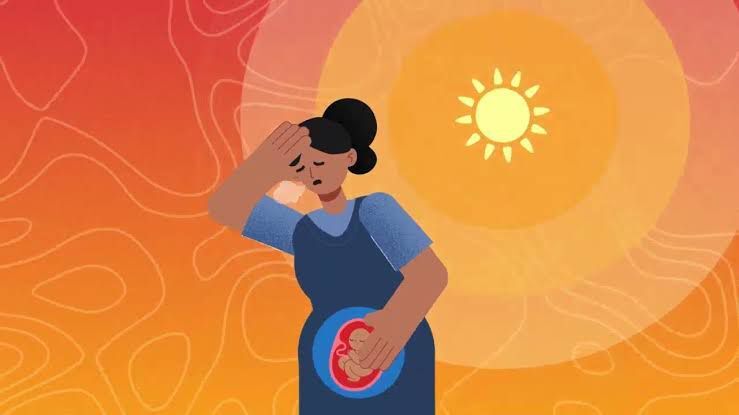Pregnant Women and Rising Temperatures in Africa

Africa has seen a significant rise in temperature over the past few decades. According to the Intergovernmental Panel on Climate Change (IPCC), the region is warming at twice the global average and is expected to see temperature increases of 3°C to 5°C by the end of the century if emissions are not curbed.
The World Meteorological Organization (2025) reported that 2024 was among the warmest years on record for Africa, with more frequent and intense heatwaves affecting both urban and rural areas. Yet, most health systems in Africa are ill-equipped to handle heat-related illnesses, especially among vulnerable groups such as pregnant women.
Why Pregnant Women Are More Vulnerable
Pregnancy induces numerous physiological changes, including increased body temperature and cardiovascular strain. When exposed to high ambient temperatures, these changes can exacerbate health complications such as:
- Dehydration and heat stress
- Preterm labor
- Low birth weight
- Stillbirth and miscarriage
A study in Nature Climate Change (2020) found that extreme heat exposure during pregnancy increased the risk of preterm birth by up to 16%. In sub-Saharan Africa, where over 75% of women work outdoors, particularly in agriculture and informal markets, the risk is even higher due to prolonged exposure without access to shade, rest, or hydration.
Startling Statistics
- In Nigeria, the maternal mortality rate is among the highest in the world 993 deaths per 100,000 live births (World Bank, 2023).
- Over 900 million people in Africa lack access to electricity, limiting access to fans, air conditioning, or refrigerated drinking water (IEA, 2022).
- In a 2021 study from The Lancet Planetary Health, researchers estimated that heat exposure during pregnancy accounted for 17% of stillbirths in low-income countries, with a large burden falling on Sub-Saharan Africa.
Building Climate-Resilient Maternal Health Systems
To protect pregnant women in sub-Saharan Africa, an urgent shift towards climate-resilient healthcare is needed. Recommended actions include:
- Early Warning Systems: Implement mobile-based heat alerts and education campaigns targeting pregnant women and caregivers.
- Climate-Smart Health Facilities: Invest in solar-powered clinics with cooling technologies and trained midwives to manage heat-related complications.
- Community-Based Solutions / Capacity Building: Educate women on hydration, rest, and heat avoidance during pregnancy, especially in farming communities.
- Data Collection and Surveillance: Disaggregate maternal health data by climate variables to better understand heat impacts.
- Policy Integration: Embed maternal health in national climate adaptation plans (e.g., Nigeria’s Health National Adaptation Plan).
The intersection of climate change and maternal health in Africa is not a distant threat; it is an unfolding emergency. Rising temperatures are already endangering the lives of pregnant women and newborns, especially in regions with fragile health systems and deep social inequities. Addressing this crisis will require urgent, coordinated action from governments, global health institutions, and civil society to ensure that no woman is left behind in the fight against climate change.
References
- IPCC Sixth Assessment Report. (2023).
- World Meteorological Organization. (2025). State of the Climate in Africa.
- World Bank. (2023). Nigeria Maternal Mortality Ratio.
- IEA. (2022). Africa Energy Outlook.
- Nature Climate Change. (2020). Heat exposure and preterm birth risk.
- The Lancet Planetary Health. (2021). Climate change and stillbirth risk in LMICs.



